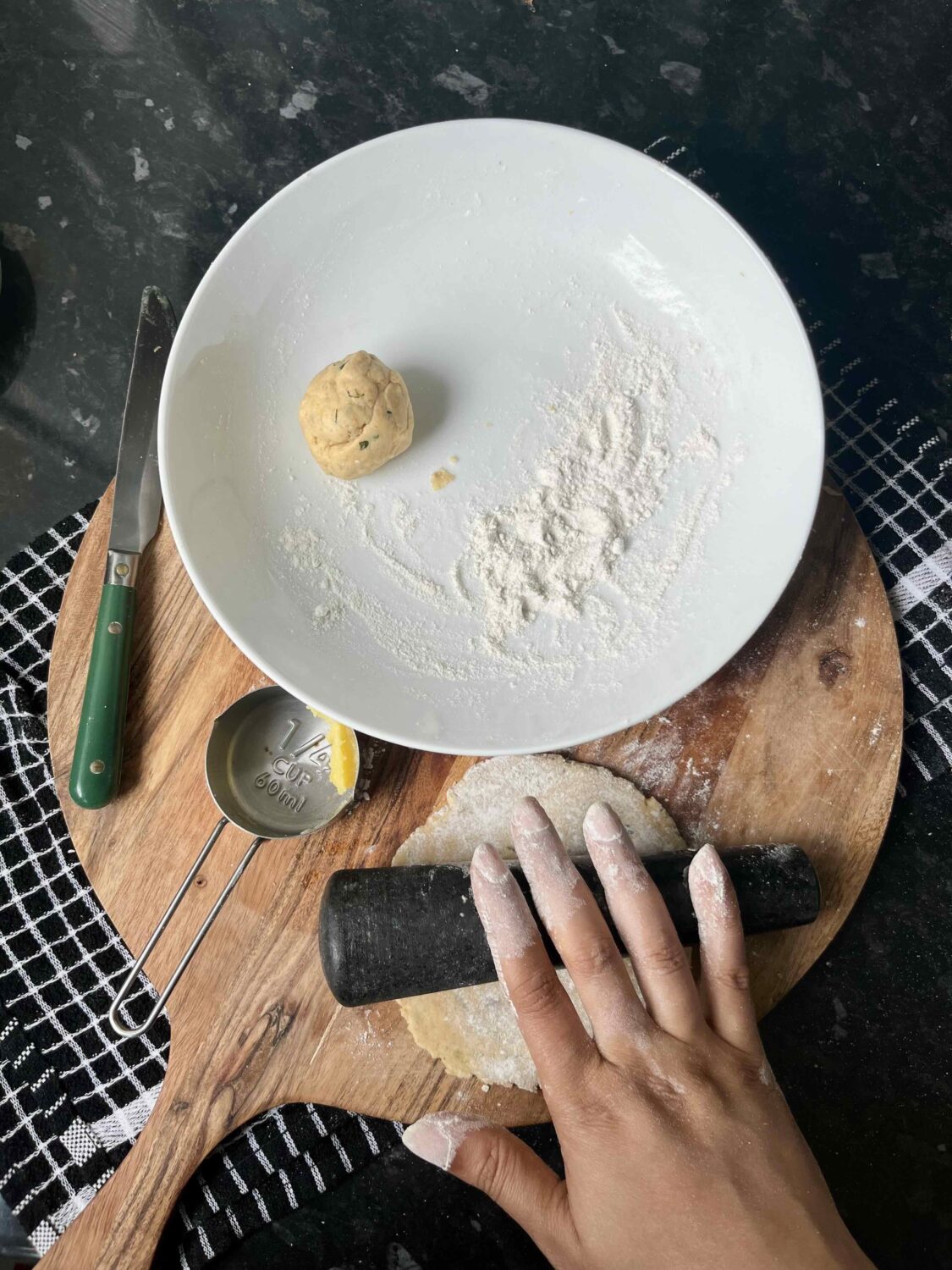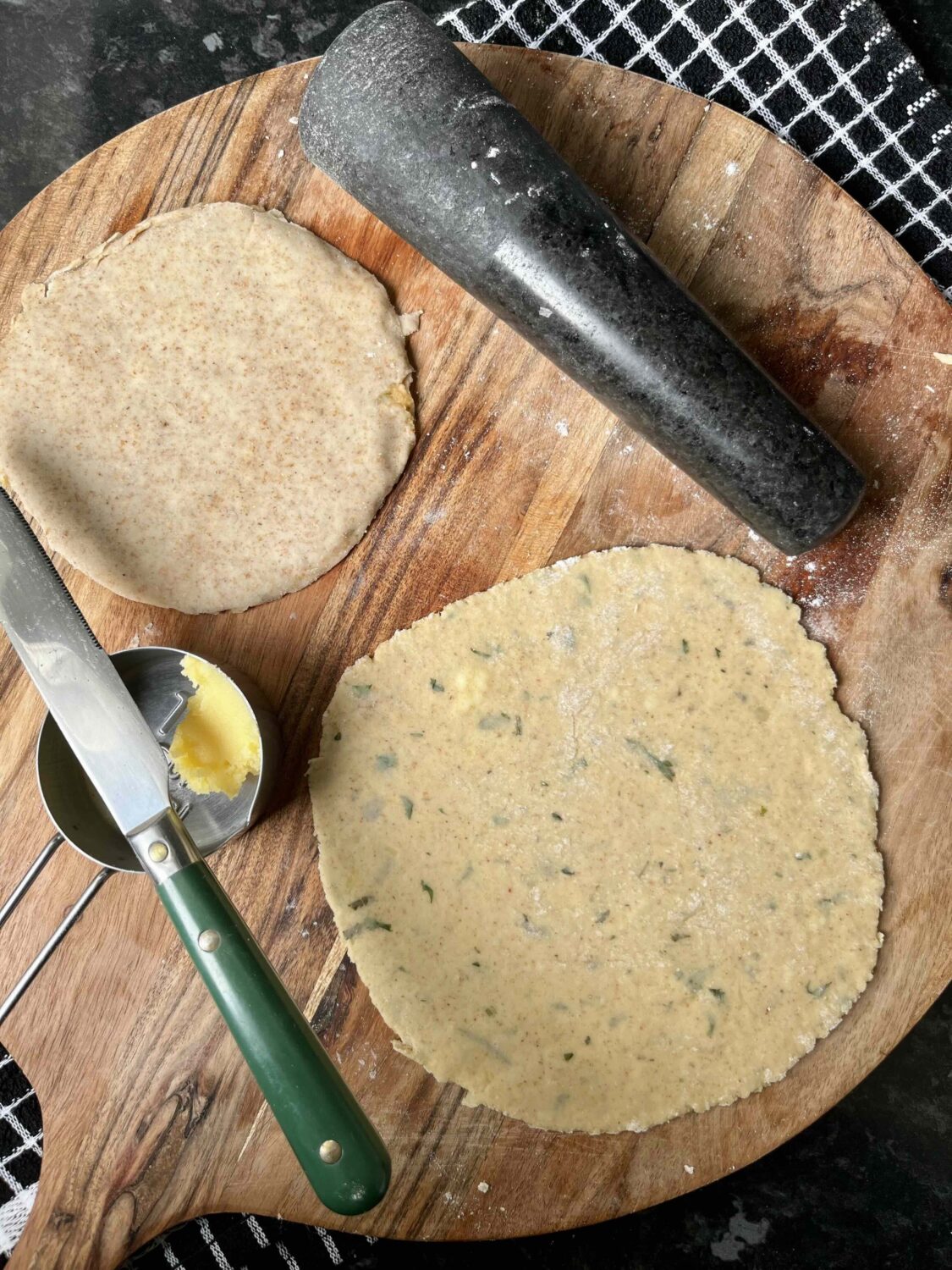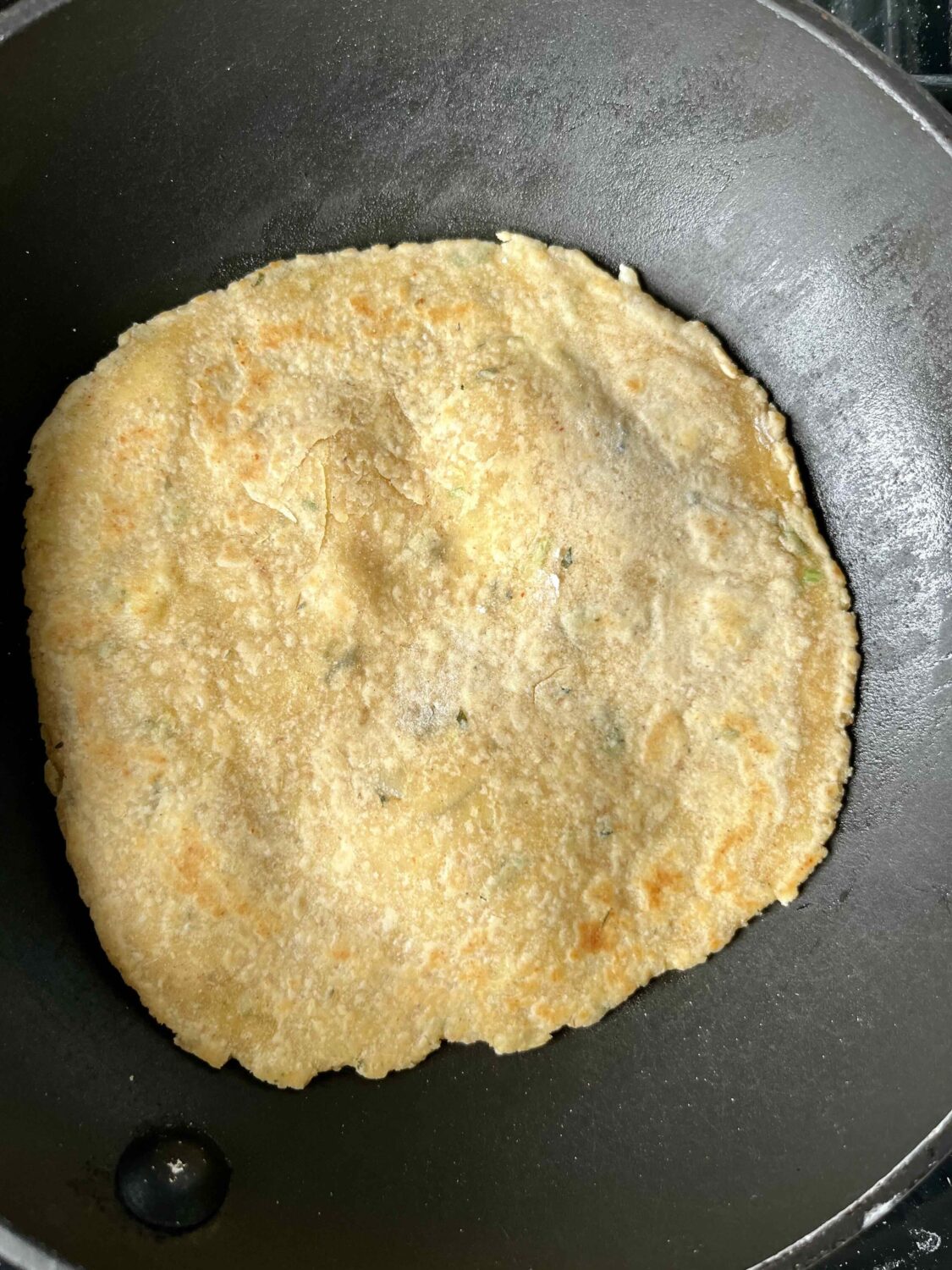Choose-Your-Own-Adventure Parathas for the Autumn
By Apoorva SripathiAutumn brings with it so much to feast on: leaves change colours, heat gives way to piercing coldness, and time shrinks into oblivion. The colours change in the kitchen too: from deep red beets and gloriously orange squash and sweet potatoes to hearty apples, pears, and root vegetables. In all, there is a lot of heft, both inside and outside.
This is a great recipe that demonstrates heft in the kitchen and it features sweet potatoes and paneer mashed into oblivion with a handful of spices and herbs of your choice. In my cooking experience, I’ve found that choosing your own adventure based on what you have to hand is the best way to go. For example, to make this you don’t necessarily have to boil/steam sweet potatoes from scratch or buy paneer from the store; this dish works well (especially) if you have leftover mash sitting in the fridge or if you have some halloumi to spare or any fresh herbs that are about to go off. A steamed/boiled root vegetable plus a few spices with some grated cheese stuffed or mixed into dough is still a paratha. Shakespeare would attest: that which we make a paratha by any other ingredients would taste just as good! It applies here.
My recipe (as always) is a riff on the Punjabi aloo paratha: where the many original recipes (as each family will have their own version) use a potato, I use a sweet potato. What I haven’t changed here is the liberal use of fat. The result is a glistening and lustrous flatbread lubricated with ghee that can be eaten for breakfast, lunch, or dinner.

Serves 4 (makes 10-12 parathas)
Ingredients
Half a sweet potato or 150g, steamed or roasted till soft or roasted squash
100g paneer or halloumi, grated
1 tablespoon red chilli powder
1 tablespoon cumin powder
½ tablespoon coriander powder
12-15g fresh herbs (coriander, dill, and parsley or just coriander), finely chopped
2 teaspoons dried fenugreek leaves (kasuri methi)
Salt to taste
180g whole wheat flour (or a mix of white rye and all purpose) + extra for rolling out parathas
Oil or ghee for cooking the parathas and for making the dough
Method
In a large bowl, crumble or mash the sweet potato (or add mash here if you have any leftovers). If you have boiled the sweet potato, make sure it has cooled down and there isn’t residual water in them which can make the dough too wet. Add the grated paneer or halloumi, red chilli, cumin, and coriander powders, and the finely chopped fresh herbs and mix. Crush the dried fenugreek leaves between your palms for a few seconds and add to the potato mixture. Season with enough salt – perhaps start with half a tablespoon and mix. Add the flour to this mixture along with a tablespoon of oil or ghee and knead into a soft, smooth dough. If you find that the dough is too wet, sprinkle in more flour in increments and knead. You will not need any water for this at all. Start with an over seasoned mash and then add the flour.

Once kneaded into a tight dough, divide into 10 smooth balls, drizzle oil on top and cover with a tea towel for 20 minutes. When you are ready to roll them out, flatten the balls into discs. Heat a frying pan on medium-low.
Take one disc and place it on a cutting board or a kitchen surface and dust liberally with flour. With a rolling pin (or an empty wine bottle or a pestle), roll the disc into a flat circle. So first, roll the disc away from you as much as you can without applying too much pressure on it. Hold the rolling pin on both sides and push away from you. Rotate the disc so the part you rolled away is facing you and then roll the other side away from you again. Do this till you’re happy with the size of the paratha. You also don’t want to roll it too thin that it breaks nor do you want it uneven in places.

Gently pick up the paratha and place it on the pan. The paratha will puff up. Apply oil/ghee to the side facing you and after 30 seconds to a minute, flip it so that the oiled-uncooked side is now touching the pan. The cooked side that’s facing you should be browned in spots. Apply more ghee to this side. After a minute, lift the paratha with a spatula and flip again. If both sides are golden brown and cooked, transfer to a wire baking rack or on a large tea towel that can be folded over on top to keep the paratha soft. Repeat the same process for the rest of the parathas. Serve warm with more ghee added on top, together with pickle, and some yoghurt.
Or eat plain with a cup of hot tea for breakfast.
Apoorva Sripathi is a writer and editor from Chennai, and the co-founder of the independent magazine CHEESE. She also writes shelf offering, a food and culture newsletter. You can find all her work at apoorvasripathi.com. Photography by Apoorva Sripathi.
You can read all of Apoorva’s recipes on Something Curated here.